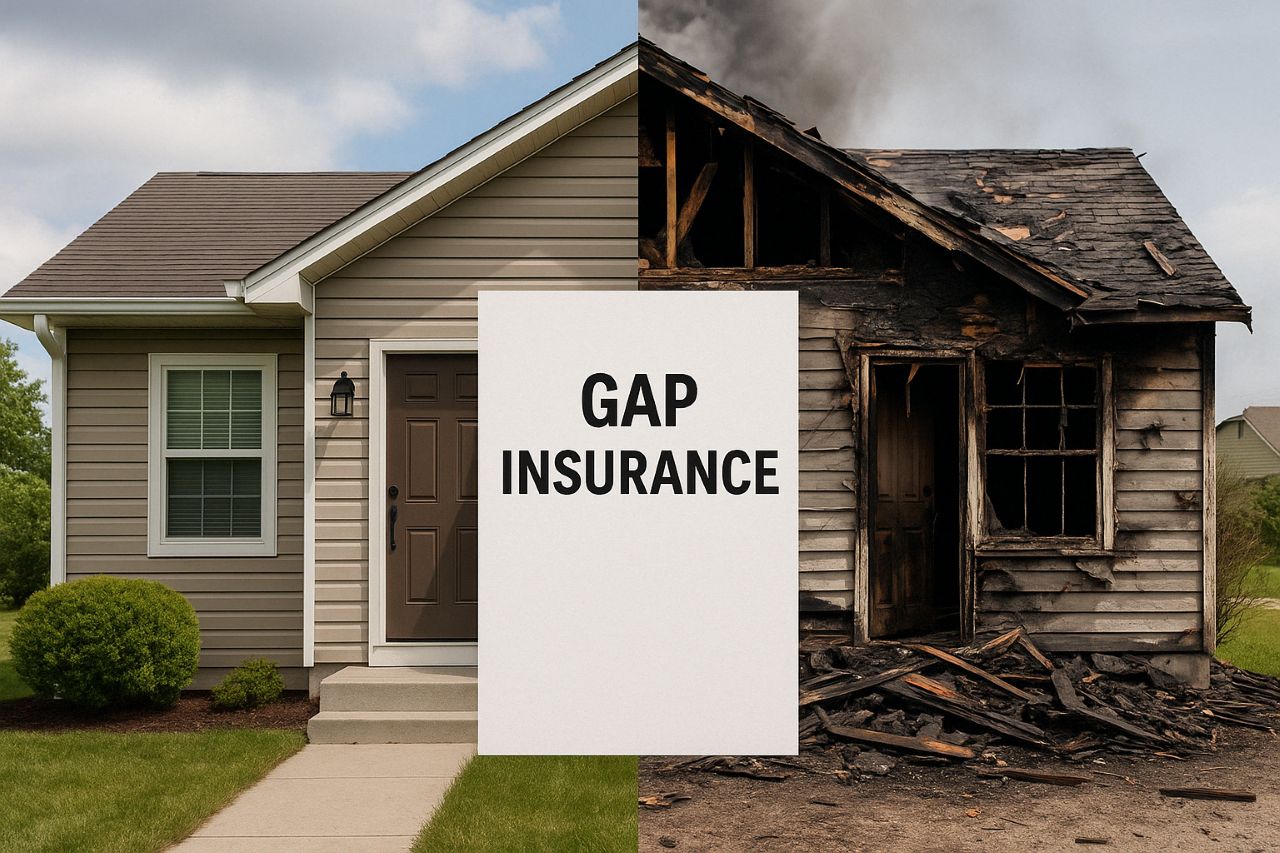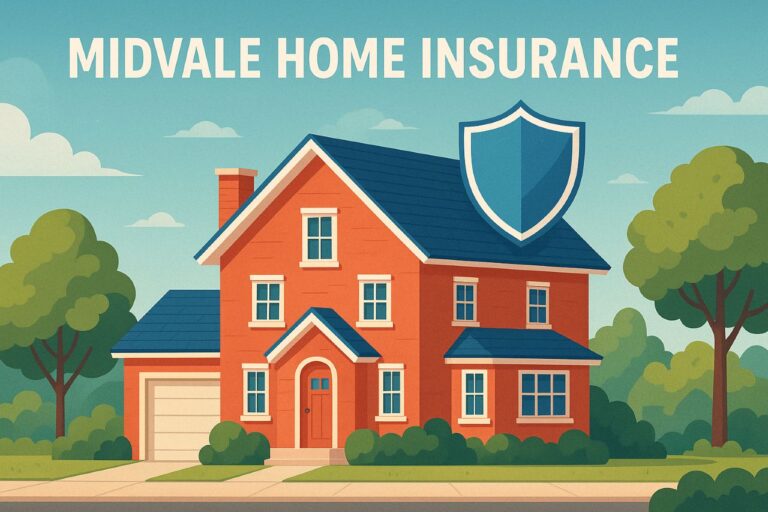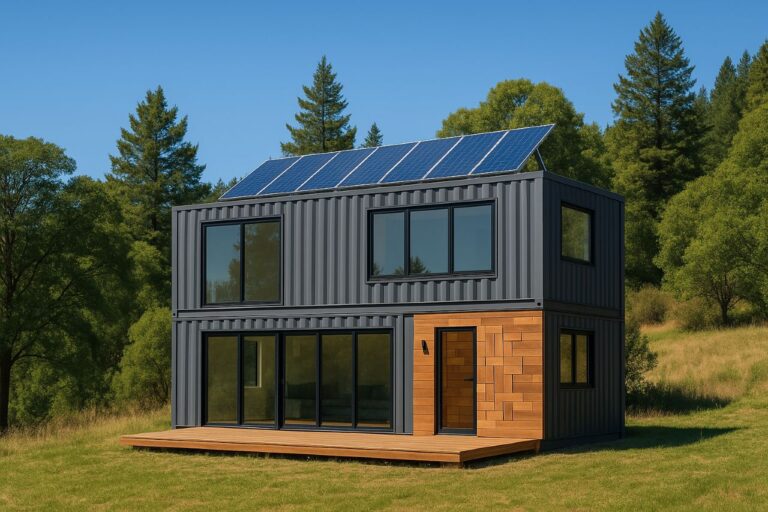Gap Insurance for Homes: Smart Safety Net or Costly Mistake?
While gap insurance in your home is often overlooked, it can be a financial security network you didn’t know about. If standard home insurance does not cover the full cost of reconstruction or market losses, this policy fills the gap. But is it really worth the extra cost?
It promises peace of mind, but not everyone can benefit from it. Understanding how it works and when it makes sense is key to making intellectual decisions. Let’s find out if gap insurance is a lifesaver or another unnecessary cost.
Table of Contents
What is Gap Insurance for Homes?
Gap Insurance for Homes is an additional coverage option designed to protect homeowners if the standard distribution of home insurance does not fully cover the costs of repairs or reconstruction. This is especially useful in situations where household value decreases or construction costs are unexpectedly rising.
For example, if your home is insured for USD 250,000, but the reconstruction reaches USD 300,000, the gap insurance can cover the difference of USD 50,000. Without them, these additional costs will come out of your pocket.
How Does It Work with Standard Home Insurance?
Standard homeowner insurance has restrictions based on the number of apartments you choose. If conversion costs exceed this limit due to inflation, natural disaster costs, or market fluctuations, you will pay the difference.
Gap insurance occurs to cover this flaw and prevents financial exposure in the worst-case scenario. This is very important, especially in areas where disaster risks are at risk, if you have insurance.
When Do You Need Gap Insurance?
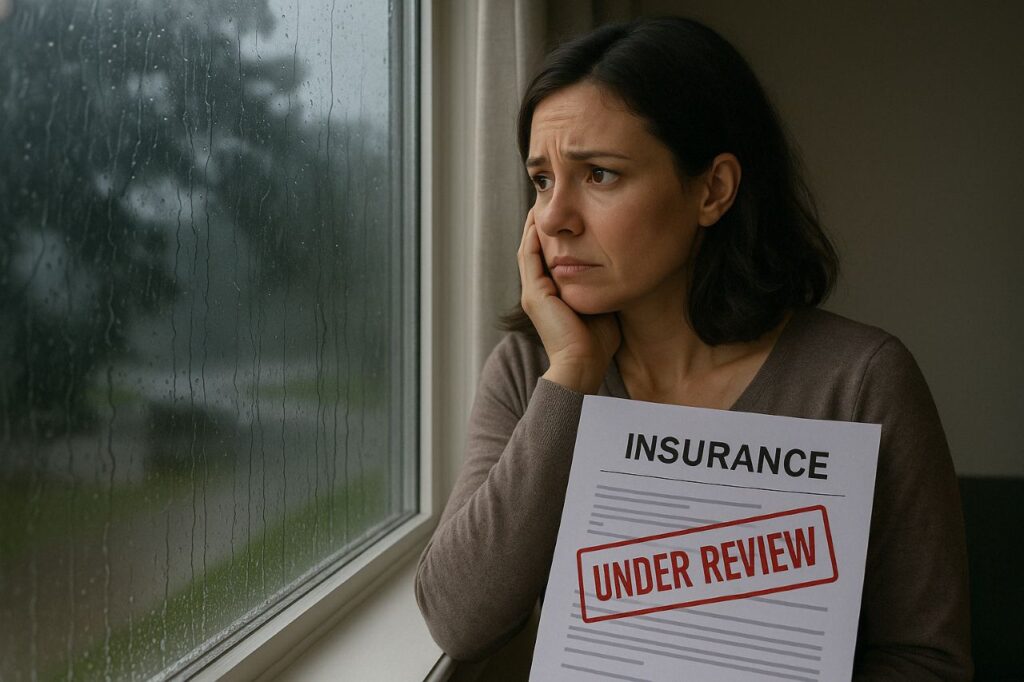
Bought at Market Peak?
If you buy a home when the price is the highest, market depression can significantly reduce your current value. In the event of major losses such as fire, flood, structural damage, or other major losses, standard home insurance can cover lower market values rather than what you are still taking on your mortgage. Gap insurance covers this flaw and prevents you from paying for a home that is no longer worth the purchase price.
Living in a High-Risk Disaster Zone
Homeowners in areas susceptible to natural disasters such as bush-fires, hurricanes and floods are exposed to increased risk. In many cases, standard home insurance has exclusions or payment restrictions for such events. GAP Insurance can provide the additional funding needed for a full recovery and reconstruction, especially if the standard directive is not fully advanced.
Your Mortgage Exceeds the Home’s Current Value
If your home estimate drops under your mortgage debt, if your home is damaged or destroyed, you can have serious problems. Standard guidelines do not cover the gap between loan amount and payment based on current market value. Gap Insurance aims to fill this financial difference and prevent you from getting a mortgage on real estate that you can no longer live.
Construction Costs Are Rapidly Rising
In many regions, building materials and workers costs have increased significantly. If your home is damaged, your insurance policy may not reach enough to convert it into its original condition. Gap insurance covers these increases in costs and ensures that inflation and local buildings are not insured and in pockets.
Why Gap Insurance Matters
In each of these scenarios, gap insurance acts as an important safety net. It protects your finances by the difference between what your insurance policy pays and what you actually need to repair or replace your home. Without them, homeowners could be exposed to unexpected costs from their own pockets that could lead to debt and foreclosures.
Who Should Consider Gap Insurance?
Gap insurance is not a uniform solution, but it can be valuable financial protection for certain types of homeowners, especially those with high financial exposure and areas where risk is likely to occur.
First-Time Home buyers
New homeowners often have smaller deposits and higher terms of value-value relationship (LTV). This means there is less fairness at home than what you owe. If the market falls or if a disaster occurs at the start of ownership, you may be given more mortgage amount than the current value of the home. GAP Insurance protects you from putting this burden during your vulnerable early assets.
High Loan-to-Value (LTV) Mortgage Holders
If your mortgage is near or even exceeds the current value of your home, you will be in considerable financial risk if significant damage or loss occurs. Standard home insurance policies typically pay based on the market or exchange value, depending on which value is lower. Gap Insurance helps with this difference and prevents you from paying for depreciable assets from your own pocket.
Homeowners in Disaster-Prone Areas
Gap insurance is even more important when the property is in areas susceptible to natural disasters such as hurricanes, bush-fires, floods, and earthquakes. Damage from these events can significantly reduce household value and inflate reconstruction costs. Gap covering can help bridge the financial gap between standard insurance payments and actual repair or replacement costs, especially when demand for widespread disasters rises.
Buyers in Rapidly Changing Housing Markets
Real estate prices can fluctuate considerably in the booming real estate market. If you buy at market height and your value drops later, you may be in the water on a mortgage. Gap insurance can provide important protection by covering the difference between the mortgage amount and actual payment in the event of a covered loss.
Who Might Not Need It?
Gap insurance may not be necessary for long-term homeowners who have built up significant capital in their ownership or have already paid a large portion of their mortgage. These people are less likely to be a gap between insurance payments and unpaid credit credits. If your home is in a low-risk area and you have comprehensive home ownership insurance, you may already be well protected without gap coverage.
Pros of Gap Insurance for Homes
Covers Valuation Gaps
Gap insurance was developed for the actual costs of paying and reconstructing standard homeowner insurance, or for the differences between what they owed on a mortgage. This is especially useful if your home’s value has decreased or if your construction costs have increased since your purchase. It ensures you do not have economic rebellion during the crisis.
Protects Your Home Equity
For homeowners purchased at top market prices, gap insurance acts as a protection against lower property values. When a disaster occurs, it protects the fairness you have built so that you cannot rent your home.
Offers Peace of Mind
In unpredictable real estate markets or high-risk regions, gap insurance brings peace. You know that even worst-case scenarios, such as natural disasters and real estate market crashes, there is financial support to recover and rebuild without any significant personal losses.
Cons of Gap Insurance for Homes
Additional Premium Costs
Gap insurance is not included in the standard guidelines. This means you will have to pay for additional protection. This can be a problem if you are trying to manage your already close finances or reduce monthly insurance costs.
May Not Be Necessary for All
If your mortgage balance is low, you have stable property value, or significant capital, you don’t need gap insurance. In such cases, gap insurance is an additional effort with limited benefits, as regular home insurance can already provide adequate coverage.
Limited Availability and Varying Terms
Not all insurance companies offer gap insurance for your home, and those who do this may have very different insurance terms. Some guidelines may have strict approval standards or cover only certain types of property damage. Therefore, it is important to read small prints before purchasing.
Is It Worth It?
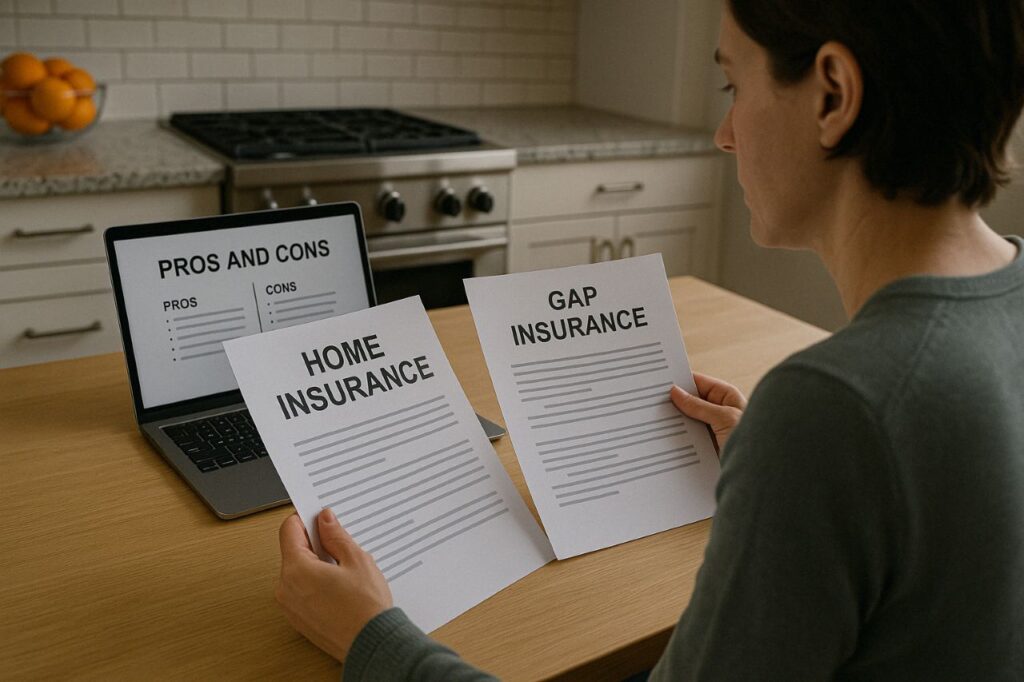
Whether gap insurance is valuable depends on your unique circumstances. If you have a low down payment, live in a high-risk area recently, or are concerned about lower property values or rising construction costs, GAP Insurance can provide significant financial protection. It serves as protection against market volatility and unexpected events, ensuring that it does not cover the difference between insurance distribution and actual losses.
On the other hand, if your home has substantial capital, gap insurance may not be necessary if the credit value-value ratio is low in a stable housing market with minimal risk factors. In such cases, additional premiums can be stored or invested elsewhere. Ultimately, it is important to assess current insurance protection restrictions, mortgages and local apartment trends before deciding whether additional costs are justified.
How Much Does It Cost?
The cost of a home gap insurance varies greatly depending on the main factors. In contrast to standard home insurance, which focuses on general living and liability protection coverage, gap insurance is a specialized add-on that you can use to protect yourself from lack of valuation.
Factors That Affect the Cost
1. Your Location
Homes in areas susceptible to natural disasters such as hurricanes, floods, and bushfires usually carry higher premiums due to gap insurance. These regions are considered high risk, and the possibility of serious damage increases the cost of providing additional compensation.
2. Property Value and Mortgage Size
The higher your home is, the closer you get to the mortgage amount for this value, the more coverage you need. Homes with a high-value credit ratio (LTV) relationship require more expensive gap insurance to properly close potential gaps in the cover.
3. Your Existing Home Insurance Coverage
If standard homeowner policies already include coverage for extended or guaranteed replacement costs, it may be less than the gap directive that can reduce the premium. However, if your existing insurance is limited, gap insurance must do more and raise prices.
4. Your Insurance Provider’s Structure
Not all insurance companies offer gap insurance as an independent product. Some people bundle it into improved guidelines or provide it only under certain conditions. Depending on your provider’s underwriting criteria and insurance terms, monthly expenses may vary accordingly.
Typical Monthly Premium Range
On average, you can expect to pay between $20 and $50 a month for Gap Insurance as an add-on to your existing homeowner insurance policy. For high-quality homes and real estate in areas at risk of disasters, costs can exceed this area.
Where to Get Quotes
For more personalized, more accurate estimates, we recommend consulting directly with your current House insurance company. You can also compare options through reputable platforms such as Policygenius, The Zebra, or Insurify,, which you can purchase according to your unique situation.
How to Check If You’re Under-insured

Many homeowners mistakenly assume that standard home insurance is sufficient for disaster attacks and frees themselves from the greatest costs. Under the insured, your guidelines do not fully cover the costs of rebuilding or repairing your home after a loss. Fortunately, you can take some proactive steps to determine if there is a risk.
Review Your Dwelling Coverage Limit
First, check the homeowner’s insurance declaration website for apartment volumes. This is the maximum amount your insurance company will pay for repairs or reconstructing your home. Compare this number from zero to market value with current estimated costs for rebuilding your home.
Use a Rebuild Cost Estimator
Online tool such as Homeadvisors‘ true cost and craftsman’s national quotes can help you determine how much it costs to rebuild your home based on local work and material prices. Make sure your calculations include square meters, structure type, interior and special architecture details.
Speak With a Licensed Insurance Agent
Experienced agents can provide valuable insight into local trends, such as inflation in construction costs and increasing demand for building materials in your area. You can also review the guidelines and submit recommendations based on updated risk assessments or changes to the property.
Ask About Enhanced Coverage Options
If you find your order is too short, you should ask your insurance company about an extended replacement cost or guaranteed replacement cost. These options offer pillows beyond guidelines limits and are often 10% to 50% more than apartment limits or full coverage, regardless of reconstruction costs. If provided by a provider, it can be a great alternative to Gap insurance.
Check out the cover now to prevent any costly surprises later. Proper insured means knowing that no matter what happens, your home and your financial stability are protected.
Alternatives to Gap Insurance for Homes
Gap insurance can provide great protection for some homeowners, but this is not the only way to bridge the difference between what your insurance company covers and what you actually need in a crisis. Take these valuable alternatives into consideration before committing yourself to gap insurance.
Extended Replacement Cost Coverage
This option specifies the apartment’s housing restrictions at a specified percentage that is typically 10% to 50% above the insurance amount listed in the directive. For example, if your home is insured for USD 300,000 and you have a 25% replacement cost driver, the insurance company will cover up to $375,000 in reconstruction costs.
Enhanced replacement cost compensation is perfect for removing unexpected spikes in construction costs due to inflation, bottlenecks, or natural disasters that cause local price certificates. It often adds a buffer that eliminates the need for separate gap insurance.
Guaranteed Replacement Cost Coverage
Guaranteed replacement cost coverage provides the most robust protection. Insurance companies are guaranteed to pay the full cost of rebuilding the home, even if they exceed the housing limit for an S-S apartment without a specified limit.
This type of cover is particularly useful in high volatile markets and areas where there is disaster risk, where reconstruction costs can skyrocket unexpectedly. Although they are usually equipped with higher premiums, the security and financial protection they offer are worth investing.
Ordinance or Law Insurance
Also known as the Development Code Upgrade Coverage, this policy add-on helps you pay for the cost of rebuilding your home in the current building regulations and regulations that may have changed since the home was originally built. If your home is damaged or destroyed, local laws have been updated, there are accessible features, or structural changes, this cover covers these additional costs.
Regulation or legal insurance is especially valuable for older homeowners where outdated electricity, sanitation, or structural systems will no longer meet the current code and the costs of reconstruction can increase significantly.
Where to Learn More
To explore these alternatives in depth and compare them to gap insurance, visit trusted sources like the Insurance Information Institute (III). Their consumer-focused guides provide clear explanations of each coverage type, how they work, and who they benefit most.
Conclusion

Home gap insurance is not a size product. For some homeowners, this means the difference between financial ruin and recovery after a larger disaster or market disappears. For others, this can be an unnecessary cost with limited benefits. The key is to understand your own risk profile.
Check out existing homeowner guidelines to see what is already covered, talk to your insurance company about potential gaps in coverage insurance, and consider current real estate trends in your area. A thoughtful plan allows you to make a launched decision to protect either saving your investment or protecting your investment in the most urgently needed cases. During times of uncertainty, this peace of mind is invaluable.
Visit: Save Big with Fort Collins Home and Auto Insurance Bundle
Frequently Asked Questions (FAQs)
What is gap insurance for homes?
Gap insurance for homes is an optional coverage that pays the difference between your home insurance payout and the actual cost to rebuild or pay off your mortgage if your property is damaged or destroyed.
Is gap insurance for homes the same as mortgage insurance?
No. Mortgage insurance protects the lender if you default on your loan, while gap insurance protects you by covering shortfalls in insurance coverage after a loss.
Who really needs gap insurance for their home?
Homeowners with high loan balances, those who recently bought at market peak, or anyone living in a high-risk area (e.g., prone to wildfires, hurricanes, or floods) may benefit the most from gap insurance.
How do I know if I’m under-insured?
Check your home’s current dwelling coverage limit and compare it to local construction or rebuild costs. You can use online estimators or speak with your insurance agent for a professional review.
Can I add gap insurance to my existing home insurance policy?
It depends on your insurer. Some offer gap coverage as an add-on, while others may recommend extended or guaranteed replacement cost coverage instead. Always ask your provider for available options.
How much does gap insurance for homes typically cost?
Costs vary based on your location, home value, and risk profile, but it generally ranges between $20 and $50 per month. Bundling or negotiating with your provider may lower this rate.

